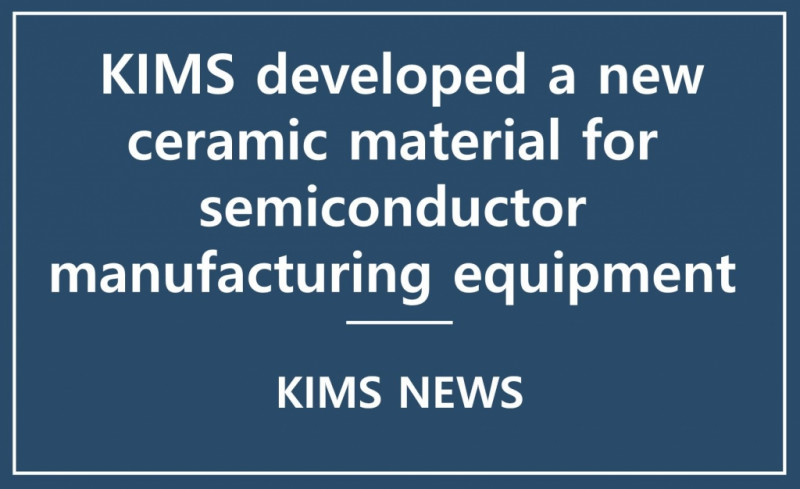R&D | KIMS developed a new ceramic material for semiconductor manufacturing equipment
Page info
Date21-06-21 17:04 Hit702Link
Contents
Contaminant particles an obstacle to miniaturization of Semiconductor line width, can be resolved! |
A Korean research team succeeded in developing manufacturing technology for plasma-resistant nanostructured composite
ceramics for the first time in Korea. With this technology, the particle issue, an obstacle to miniaturization of semiconductor
line width, can be resolved.
The research team, led by Dr. Young-Jo Park, conducted the research jointly with MiCo Ceramics Ltd. (CEO Moon-Won Yeo) to
develop a new plasma ceramic material for the first time in Korea which was expected to reduce contaminants inside
semiconductor manufacturing equipment. The team is in the Department of Engineering Ceramics at the Korea Institute of
Materials Science, a government-funded research institute under the Ministry of Science and
ICT.
Plasma etching is widely used to manufacture semiconductors. In this process, the silicon wafers and the components inside
the equipment is exposed to plasma irradiation, resulting in generating contaminant particles, which is the major cause of
chip failure.
High-power plasma etching is required as the semiconductor line width is miniaturized. New plasma-resistant materials are
urgently required to minimize the generation of contamination particles.
Two variables to prevent contaminant particles in the plasma irradiating process for material etching are the maintenance of “low
etching rate” and “low surface roughness.”
The research team succeeded in developing full density sintering without residual pores and minimizing the etching rate by
applying the pore-free, full theoretical density sintering technology which was already secured by developing the transparent
ceramics to the yttria-magnesia (Y2O3·MgO) composite ceramics.
In addition, by combining yttria (Y2O3) and magnesia (MgO), which have proven plasma resistance to suppress grain growth
in the sintering process, a microstructure at the level of 300 nanometers (nm), the lowest surface roughness, was achieved.

